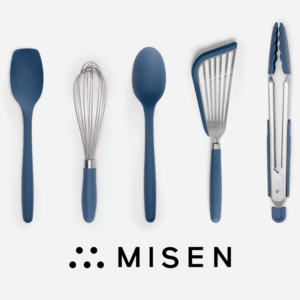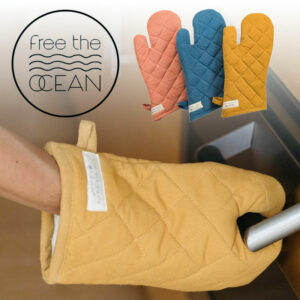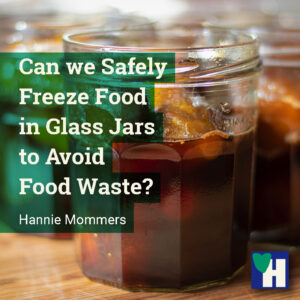
Food is wasted everywhere. That starts with the harvest, then with the distribution, followed by the shops and restaurants. But most of the food is wasted by us, the consumers. According to the Commission for Environmental Cooperation, about 57% of total food waste occurs at home.
Any leftovers from the meal can be frozen for later when we don’t have time to cook.
But what should we use if we don’t want plastic in the kitchen? Is it safe to freeze food in glass jars? To answer that question right away: yes, it is possible, provided the glass meets a few conditions.
Some of the links are affiliate links. As an affiliate associate, we earn a commission when you purchase any of the products offered through the shared links at no extra cost for you. This helps us maintain this website.
Table of contents
Is it possible to freeze food in glass jars?
Freezing food in glass jars and containers is an inexpensive and safe way to prevent food waste. It is better than using plastic containers and better than throwing the food away.
How to freeze items in glass jars?

Straight jars and containers
Using glass jars is cheap because we can use the jars we bought at the store containing jam, marmalade, or pickled vegetables.
Although not every jar is suitable for that. Glass remains a product that can break easily and you wouldn’t want glass in your food.
The jar or container should not have a ‘shoulder’. It is even better if the shape widens slightly towards the top.
The glass should be firm. Do not use a thin-walled jar. Also, pay attention to the bottom, sometimes there is a separate circle of glass that forms a weak point.
Usually, the jars that have been heated in their previous life are the best, such as jam and marmalade jars.
Don’t fill the jar 100%
It is a simple law of nature that solid materials expand when they are heated and contract when they decrease in temperature. And liquids expand when frozen.
Give the contents of your jar room to expand by not filling it completely.
Soups and sauces expand more than fruits and vegetables
The more water an item contains, the more it will expand. So it makes sense that soups and sauces need more space than vegetables and fruits.
Do not close the lid too tightly
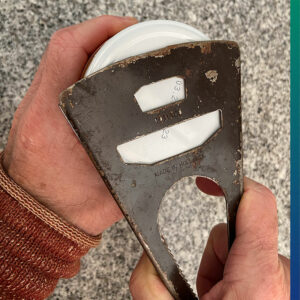
I hate it when Tom, my husband, closes the stock jars because then I have to ask for help when I want to open them.
And when freezing, the result is better anyway if the lids are not closed too tightly.
P.S. I bought a can opener 45 (!) years ago that still works great when Tom isn’t around. 🙂
Avoid rapid temperature changes
Although the contraction and expansion of glass is barely perceptible to us, it does take place. It is best to work with an intermediate step to prevent too large temperature changes, and therefore a high risk of breakage.
Let the content and jar first cool in the kitchen, then put it in the fridge, and only then in the freezer. When removing the jar, follow the same process in reverse.
Glass feels much colder than plastic when frozen so it’s best to use a potholder or oven mitt when taking the jar out of the freezer.
Safely freeze food in glass jars
- Use straight jars and containers, without ‘shoulders’;
- Don’t fill up completely (usually ¾ is best);
- Soups and sauces expand more than fruits and vegetables;
- Do not close the lid too tightly;
- Avoid rapid temperature changes.
Related: Easy Sustainable Living Ideas – Pick 1 or 2 and Start Living Green
Why is freezing in glass better than in plastic?
Plastic is a disposable product. Eventually, it will be thrown away which contributes to the plastic soup in landfills and oceans.
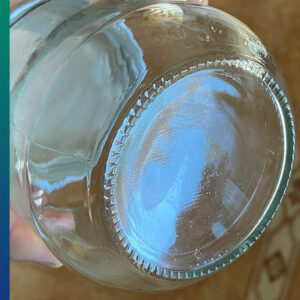
In contrast to glass, plastic deteriorates with use. The material degrades and can tear. It deforms and is scratched by metal cutlery, which does not happen with glass.
The most annoying thing about plastic is that some spices, such as Paprika powder or Curcuma, leave their color behind. Oil and grease are difficult to remove and odors remain in the material.
Plastic often contains plasticizers that are very unhealthy. And the release of microplastics that first get into our food and then into our bodies also seems quite alarming to me.
Related: Is Plastic Really a Problem? (Probably Not, but Something Else is)
Silicone if you don’t want to use glass or plastic
If you often have breakage in your glass jars when freezing, I can imagine that you would rather not use glass. In that case, I recommend silicone bags and containers.

It is true that silicone is also an artificial product. However, silicone is made from harmless, non-toxic materials.
Although it looks like plastic, it does not contain plasticizers, BPA, PVC, or other harmful materials. Since silicone is not porous, bacteria cannot penetrate it.
It is much lighter than glass, so if you are on the go or traveling, silicone is also a good alternative.
Just make sure you buy a good quality one. If the product specification does not state ‘100% silicone’ then it is mixed with plastics.
Silicone ice cube tray
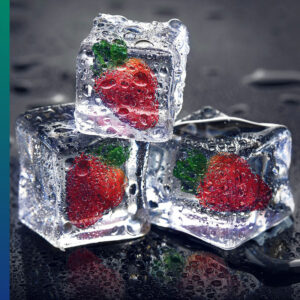
For health reasons, we never put ice cubes in our drinks. But an ice cube tray is useful for freezing small amounts.
For example, leftover fruit juice or pureed fruit or vegetables to put in a smoothie later. As well as leftover broth, which can later be used in a soup or sauce.
Wine can be stored as ice cubes, making it easy to use when you want to add a little wine to sauces. Or to get a wine that is not chilled cool faster.
Related: The Benefits of Water for the Human Body. Source of Life.
Can every product be frozen?
It is possible to freeze almost all food: meat, fish, bread, pastries, vegetables, fruit, and even some dairy products. It is safe to keep frozen food for approximately 3 months without losing its quality.
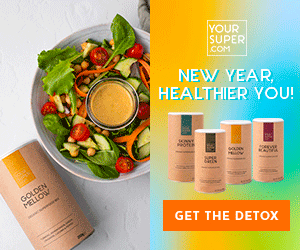
Even nuts and herbs or separated egg whites and yolks can be frozen.
It is more sustainable to buy and freeze seasonal vegetables in large quantities than to buy vegetables from a distant country in the supermarket out of season.
Blanch vegetables for a maximum of 2 minutes to keep the taste optimal.
Recipe
This is the most simple and delicious dessert I ever made. Blend 4 bananas with 8 kiwis and 2 big spoonfuls of coconut grind.
Put the mixture in small glasses, the size of a dessert. Place the glasses in the freezer and cover them. You can eat this dessert either as sorbet-ice or defrost it and mix with a coulis of raspberries or pomegranates.
Have you used glass to freeze anything? Tell us in the comment box below.

